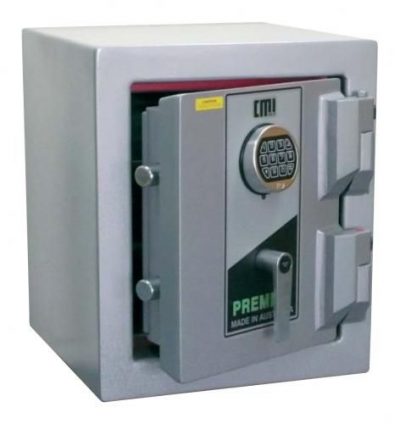
You trust your fireproof safe enough to store a lifetime of memories and your most treasured possessions. What happens when you realize your safe isn’t providing the protection it once did? Like any other mechanical device, fireproof safes have a lifespan. Age, usage, and environmental conditions affect their ability to withstand a fire. You need to know when to repair or replace your safe, and here is everything you should know.
How Long Does a Fireproof Safe Last?
Between 20 and 30 years depending on its construction, materials and level of use. Here are the most common factors that affect the durability of a fireproof safe:
- Quality of materials- safes made with heavy-duty steel and advanced fire-resistant materials are more durable than those made of lower-quality materials.
- Frequency of use- a safe that is frequently used or heavily handled will show signs of wear and tear sooner than a safe that is used sparingly.
- Environmental conditions- extreme fluctuations in humidity and temperature affect the interior and exterior of a fireproof safe. Prolonged exposure to moisture, for example, leads to rust and compromises the fireproofing material.
- Exposure to fire- frequent exposure to heat or small fires slowly deteriorates the fireproof material, reducing its effectiveness over time.
Signs Your Fireproof Safe Needs Attention
It’s not always clear if a fireproof safe has reached the end of its sign. Luckily, there are some clear warning signs to look out for that indicate the need for repairs or a total replacement.
1. Rust or Corrosion
Most people treat rust on the outside as a cosmetic issue. Rust can weaken the structure over time, and it is worse if the rust is around the hinges or the locks. It makes it harder to open and less secure. Besides rust, exposure to moisture can degrade the fireproof insulation and reduce its resistance to heat.
2. Warped Doors or Misaligned Hinges
Does the door of your safe no longer close securely or do the hinges feel loose? Your safe might be less effective in keeping heat, smoke and intruders outside. A warped door might also be a sign that the safe was exposed to extreme temperatures, potentially damaging its structural integrity and effectiveness.
3. Degraded Fireproofing Insulation
Over time, the fireproof cement or composite materials inside a safe can crack or disintegrate. If they do, it reduces the safe’s ability to withstand high temperatures and puts your belongings at risk. Inspect the inside lining occasionally to check for any degradation.
4. Outdated Security Features
A safe that worked well 15 years ago might not meet today’s standards. Advances in lock technology—like biometric readers or advanced digital keypads—make older locking systems obsolete. It doesn’t mean your safe is useless, though it could mean your safe may no longer provide the level of security you need.
5. After a Fire or Break-In Attempt
Even if a safe looks intact after a fire or unsuccessful break-in, its internal structure could be damaged. Fireproof materials may lose their protective qualities after heat exposure and physical impacts can damage the locking system or steel casing. A professional assessment is often necessary in these situations to determine whether to continue using it or get a replacement.
Should You Repair or Replace?
Once you notice an issue with your fireproof safe, the next step is deciding whether to repair it or replace it altogether. Here’s a guide to help you make that choice:
When to Repair
- Minor issues- problems like a sticky lock, loose hinges, or small surface rust can often be easily repaired by professionals.
- Cost efficiency- if repairs are relatively affordable compared to the price of a new safe, it might make sense to fix what you have, especially if its core structure is solid.
- Sentimental value- some safes hold sentimental value or unique customization. An antique safe with high craftsmanship is better restored instead of replaced.
When to Replace
- Extensive damage- If damage affects the fireproof insulation or the safe’s structure, replacing it is the safer choice. There’s no point in keeping a safe that can no longer fulfill its function.
- Older models- safes that are more than 20-30 years old may not match modern safety standards. Upgrading to better insulation or advanced locking systems will increase efficiency and security.
- Post-disaster compromise: replace your safe after severe incidents like major fires or attempted break-ins. Repairing might be an option though it’s hard to guarantee restored fireproofing properties or long-term durability.
A fireproof safe is only as good as its ability to protect your valuables. While a high-quality safe can last decades, it’s important to monitor its condition. If you’re thinking about upgrading or replacing your fireproof safe, check out our wide range of options at Safes Australia.





